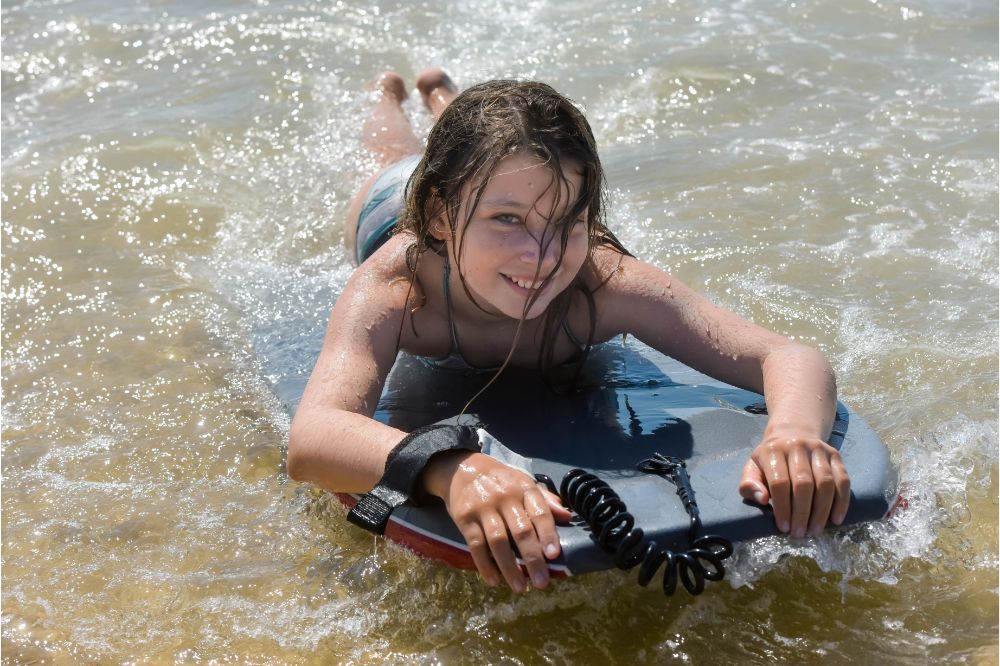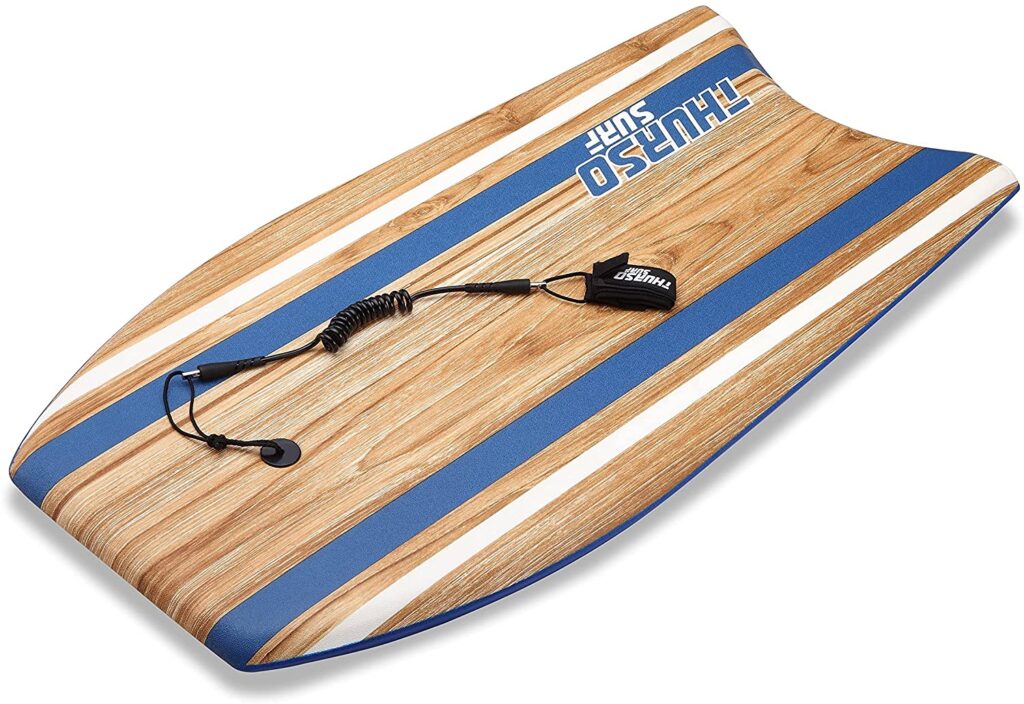A leash is one of the most important pieces of gear a bodyboard rider can have. This safety device keeps the rider and board attached to each other and prevents them from drifting apart.
There is always the possibility that the rider can fall into the water and need a very reliable leash to stay attached to the board. Unfortunately, like everything else, the leash doesn’t last forever and needs to be replaced at some point, but when?
Depending on the frequency of use, a bodyboard leash should typically be replaced every 12 to 18 months, according to our own experience. Some sources state, that you should even exchange it every 6 to 12 months, what I experienced to be a too short period of time. However, you definitely should regularly inspect the leash for physical damage or any signs of wear and tear.
Look for such signs as a damaged swivel or rail saver or whether the cord is worn out or the Velcro is weakened. Any of these signs are a good reason to replace a bodyboard leash for safety concerns. Read on and find out more about what to look for.
It is important to mention, that the main factors for the lifetime of a leash are the quality of the product, the frequency of usage and if you clean if properly after usage. So it can well be, that your leash lasts either for a much longer or even a shorter time.

What Affects a Bodyboard Leash Lifespan
There are several things that may have a huge effect on the overall life expectancy of a bodyboard leash.
Material Quality
It is a logical conclusion that the more robust the fabric used, the more durable the leash will be. You want a natural or synthetic fabric that is strong enough to withstand a lot of handling.
Different durable materials, such as urethane, polyurethane, and nylon, are used in the manufacturing of bodyboard leashes. These materials are also very resistant to wear and tear and will not easily weaken in time.
You want to avoid bodyboard leashes made from materials such as rubber or low-quality polyurethane. These materials tend to break easier and will not stand the test of time.
On the other hand, urethane is durable and can be used for long periods in salt water; it also has high UV resistance.
Hence, it will be wise to choose a bodyboard leash made from urethane because of the great durability features attached to it.
If you are interested in some good quality Bodyboard Leashes which you can get for a fair price, check out our Bodyboard Leash selection.
How It is Used
Using your bodyboard with its leash regularly will not last as long as when the opposite is true. Also, keep in mind that the extremity of your activity will have a huge impact on the lifespan of the bodyboard leash.
It is also true that if you don’t use it frequently, the bodyboard leash may dry out and become brittle.
UV and Saltwater Exposure – Cleaning and Storage
UV rays of the sun have a damaging effect on almost everything, including gear used for watersports like bodyboarding. UV rays can dry the leash out and cause it to become brittle and break easier.
Saltwater also has a negative effect on things like ropes and can cause them to become fragile. While it is good to use the bodyboard leash often, you should rinse it in clean water to get rid of any minerals.
This needs to be done every time you use it and you need to store it after use. Store the leash in a dry and cool place where it will not be exposed to sunlight.

Signs That Indicates When to Replace the Bodyboard Leash
Let’s look at the signs you need to pay attention to, indicating it is time to replace your bodyboard leash.
A Worn out Cord
Cords come in different lengths and configurations, such as coiled cords, and are made from various materials. Of all the parts of the bodyboard leash, the cord is the part that will most likely be the one that goes first. That is if you don’t take good care of it. Regardless, the cord will wear out over time and become frayed, which may cause it to break easily.
Look at the following signs:
- the color of the leash has changed or is a little white or milky, even if you have washed it clean.
- if you bend the leash, you will see that the leash gets a white sheen there.
- the leash already has small cracks in the surface
Rail Saver or Swivel is Damaged
The end that attaches to the leash cord is called the rail saver and the swivel or swivel joint connects the cuff and rail. The rail saver is made from soft materials that can become damaged over time; replace it when it shows signs of damage. Good swivels are made of brass and salt water may cause corrosion and will cause weakness, so look for signs of corrosion.
Weakened or Stretched Velcro
The cuff on one end of the leash is wrapped around your arm or wrist and is held in place by Velcro. This Velcro will stretch out after many uses and it may become weak or come loose while you are out there on the water. Make sure it is in good condition each time you go out on your bodyboard, so you don’t get separated from your board.
How to Replace the Bodyboard Leash
The following are some tips on when and how to replace your bodyboard leash. Don’t wait until it breaks; keep your eye on it.
How to Replace It
If you have a single stringer board, you would not want to attach the leash anywhere near the center part. On the other hand, if you have a double stringer board with stringers on the sides, it is best to put it in the center.
If the leash is in good condition at six months, you can wait a few months before needing to replace it. When you replace it, it depends on the overall condition, frequency of use, and how hard your leash works.
It is not difficult to replace a bodyboard leash; the detailed instructions can be found here.
Conclusion
As you can see, the physical condition of your bodyboard leash is a good indication of when to replace it. While the standard replacement schedule is every 12 to 18 months, it depends on how often you use it.
Don’t forget to inspect the leash before you go out so you can be safe out there on the water.
And most importantly:
HAVE FUN!






